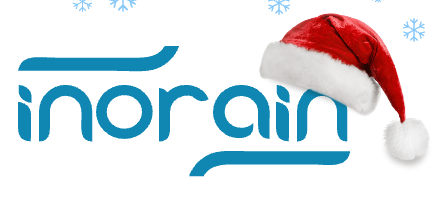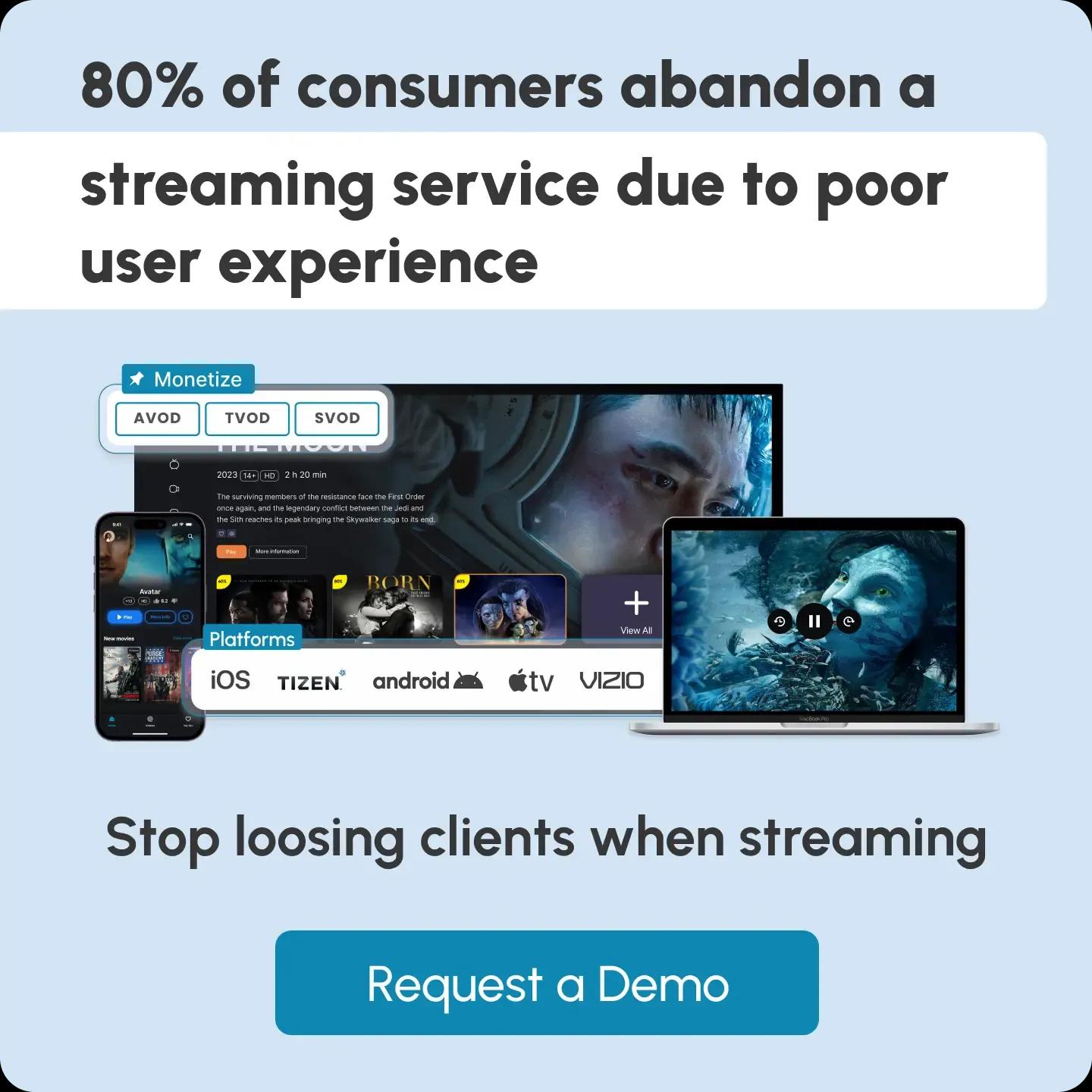Glossary term
NVOD (Near Video on Demand)
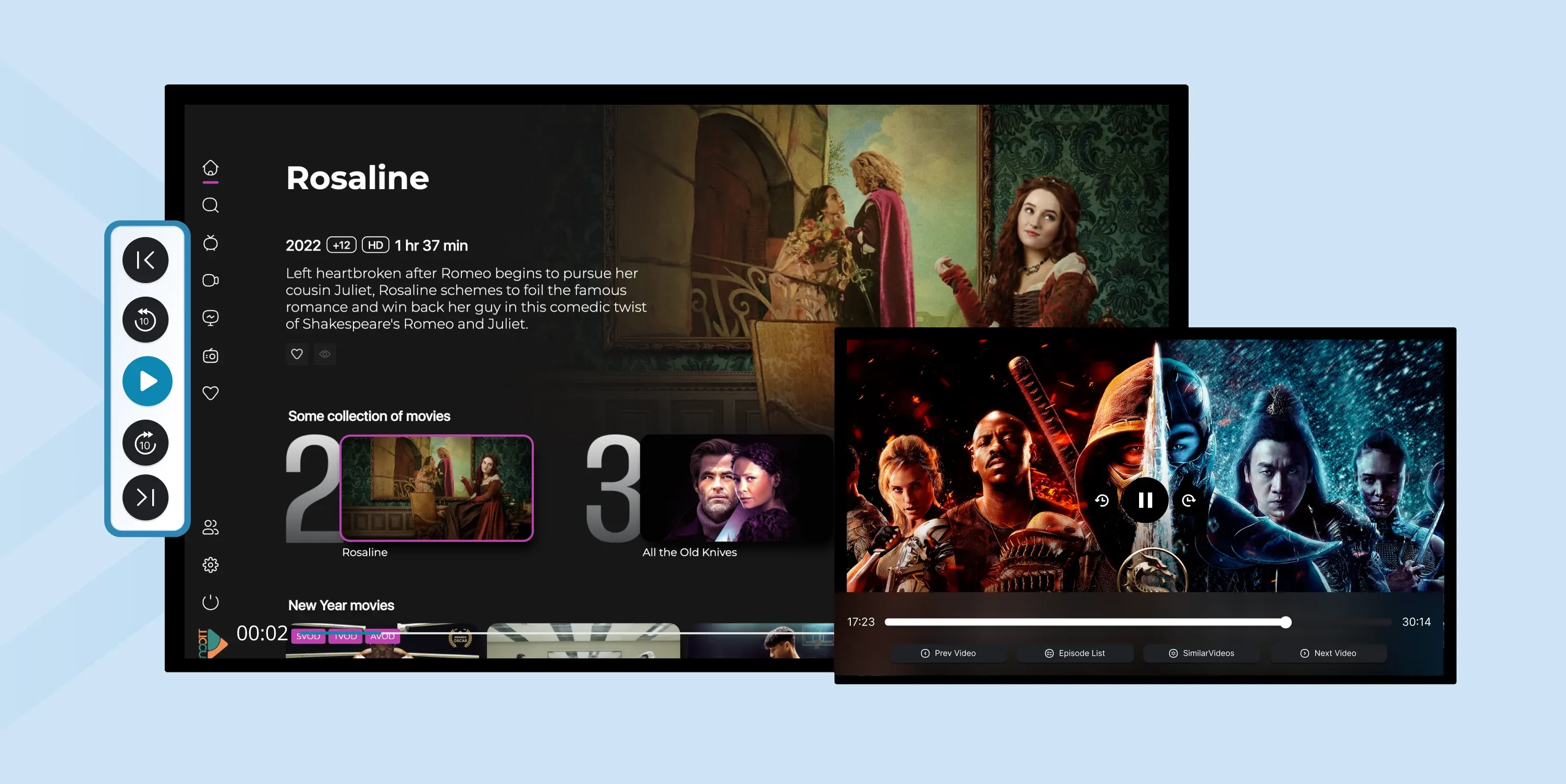
What Is NVOD?
NVOD (Near Video on Demand) is a pay-TV or broadcasting service model where the same movie or program is broadcast on multiple channels at offset start times.
Instead of letting viewers start a video instantly (like actual Video on Demand), NVOD offers several scheduled viewing slots, usually every 15, 30, or 60 minutes.
Example:
If a film starts at 7:00 PM on one channel, it may begin again at 7:15 PM on another, then 7:30 PM on another, and so on.
That way, a viewer doesn’t need to wait hours for the next showing—they just switch to the next channel where the movie is starting soon.
NVOD was especially popular before high-speed internet and full VOD platforms became common. Premium networks like HBO in the U.S. and Sky in the UK applied NVOD for blockbuster films, giving viewers flexibility before streaming and “true” VOD became the norm.
Note: NVOD’s purpose was to reduce waiting time and simulate on-demand viewing using existing broadcast infrastructure.
How Does NVOD Work?
Since NVOD’s main task was to give viewers an “almost on-demand” experience before true VOD technology was widely available, broadcasters scheduled the same movie or program on several channels at offset start times.
Here is what happened backstage of NVOD streaming:
1. Pick the title and window: The operator selects a high-demand movie/event and secures rights for a limited “near-on-demand” run.
2. Prepare the broadcast asset: Content is encoded for linear broadcast (video, audio tracks, captions) and loaded into the playout/automation system.
3. Choose the interval and capacity: Operations decide an interval (e.g., every 15, 30, or 60 minutes) and how many parallel channels will carry the title.
4. Create offset start times: The same program is scheduled on multiple channels with offset start times that repeat in a loop.
5. Map channels and EPG data: Each NVOD instance gets a channel number. The EPG lists the title on several channels with start times spaced by the chosen interval.
6. Apply access control (if pay-per-view): Conditional Access/DRM is configured so only authorized set-top boxes can view after purchase/entitlement.
7. Playout and distribution: At each offset, the automation fires the start; the multiplexed channels are delivered over satellite/cable/IP to the network.
8. Viewer discovery: The viewer opens the NVOD section/EPG; the UI highlights the next start time that’s closest to “now.”
9. Purchase or entitlement (if required): The viewer buys the event or uses an existing subscription; the headend sends authorization to the device.
10. Tune to the nearest start: The set-top tunes to the channel starting soon (or immediately) so the viewer begins at the beginning with minimal waiting.
11. Loop and refresh. After each run, the schedule repeats at the next offset. Once the window ends, the title rotates out, and new titles are scheduled.
Quick Example:
A movie is shown every 30 minutes on different channels. In channel 501 it starts at 7:00 PM, in channel 502 at 7:30 PM, and in channel 503 at 8:00 PM. If you turn on your TV at 7:22 PM, you don’t need to wait hours. You can simply select Channel 502, where the movie will begin in 8 minutes.
NVOD in Content Monetization
Here’s how NVOD is used in monetization:
1. Pay-Per-View (PPV) Sales
Mostly, NVOD is tied to premium movie releases or special events. Viewers pay a one-time fee to access a film, and the entitlement is valid across all NVOD channels showing that title.
Example:
A viewer buys a movie ticket on their set-top box for $4.99 and can then tune in at the next available start time.
2. Subscription Bundles
Some operators package NVOD with premium channel subscriptions (e.g., HBO, Sky Movies). Subscribers don’t pay per film but have access to the NVOD lineup as part of their package. This creates perceived value—more flexibility without extra cost.
3. Event-Based Monetization
Sporting events, concerts, or live shows also use NVOD scheduling. All viewers have to do is pay in advance and choose the most convenient time slot to watch.
4. Upselling and Cross-Promotion
NVOD menus often act like an early “content storefront”, promoting other movies or premium channels. Operators use this to drive upgrades from basic cable to premium tiers.
Note: NVOD monetizes content by reducing wait times for high-demand titles, encouraging impulse purchases (PPV), and increasing the value of premium subscriptions.
Advantages of NVOD
- Viewers don’t have to wait days or hours for a program; they can catch it within minutes on another channel.
- NVOD works with existing broadcast infrastructure—no need for complex interactive systems.
- Because content is broadcast, the network load doesn’t increase with the number of viewers.
- Useful for popular movies or events where demand is high but true VOD infrastructure isn’t available.
Limitations of NVOD
- Viewers still wait for the next interval (15–60 minutes), unlike VOD, where playback starts instantly.
- Multiple channels may broadcast the same movie, reducing variety in available programming.
- Viewers can’t pause, rewind, or fast-forward like with modern VOD services.
- With broadband internet and streaming platforms, NVOD has largely been replaced by true VOD.
NVOD vs VOD
Here is the main difference between NVOD and VOD:
VOD (Video on Demand) is a service that allows viewers to start, pause, rewind, and watch content instantly at any time over the internet or via a set-top box.
NVOD (Near Video on Demand) is a broadcast system where the same movie or program plays on multiple channels at offset times, providing viewers with a near on-demand experience without playback controls.
Comparison Table
| Aspect | VOD (Video on Demand) | NVOD (Near Video on Demand) |
|---|---|---|
| Definition | Lets viewers start content instantly, anytime they want. | Broadcasts the same program on multiple channels at offset start times (e.g., every 15–30 minutes). |
| Technology | Server-based streaming over the internet or a set-top box. | Linear broadcast using multiple TV channels. |
| Viewer Control | Full control: pause, rewind, fast-forward, resume. | No control: can only join at the next start time. |
| Availability | On-demand, 24/7, anywhere with internet. | Limited to scheduled offsets on TV. |
| Monetization | SVOD (Netflix), TVOD/PPV (iTunes), AVOD (YouTube). | Mostly Pay-Per-View (PPV) or included in premium TV bundles. |
| Main Advantage | True convenience and flexibility. | Shorter waiting time compared to traditional TV schedules. |
| Main Limitation | Requires internet and storage infrastructure. | Wastes broadcast channels, lacks playback control, and is largely outdated today. |
Frequently Asked Questions
Content Writer
Anush Sargsyan is a content writer specializing in B2B content about OTT streaming technologies and digital media innovation. She creates informative, engaging content on video delivery, OTT monetization, and modern media technologies. The goal is to help readers easily understand complex ideas. Her writing is the bridge between technical detail and practical insight, making advanced concepts accessible for both industry professionals and general audiences.
Related terms
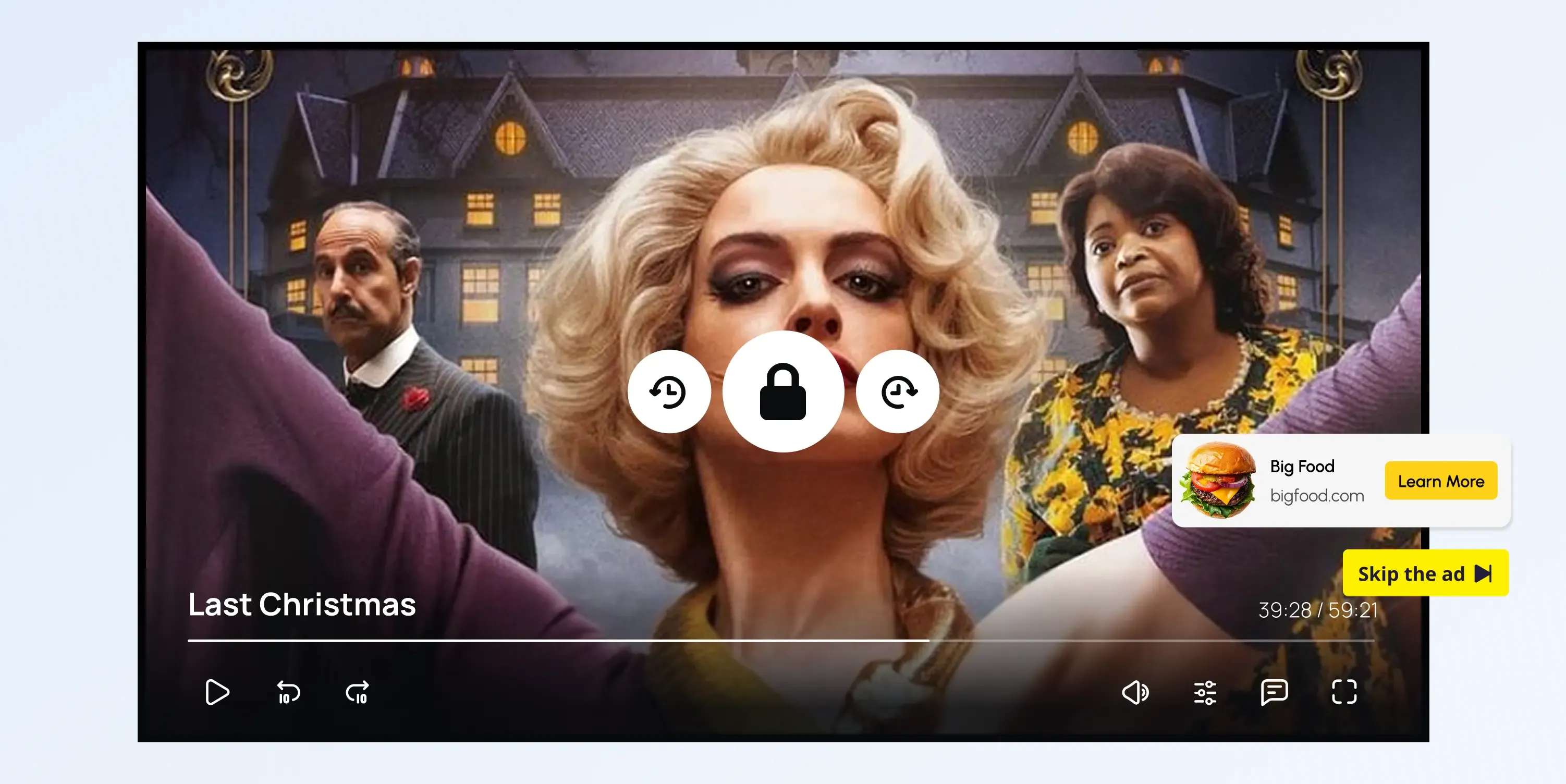
AVOD (Advertising-Based Video on Demand)
Explore how AVOD works, its monetization model, and why it's popular for free streaming platforms. Read the full definition on inorain.com glossary.
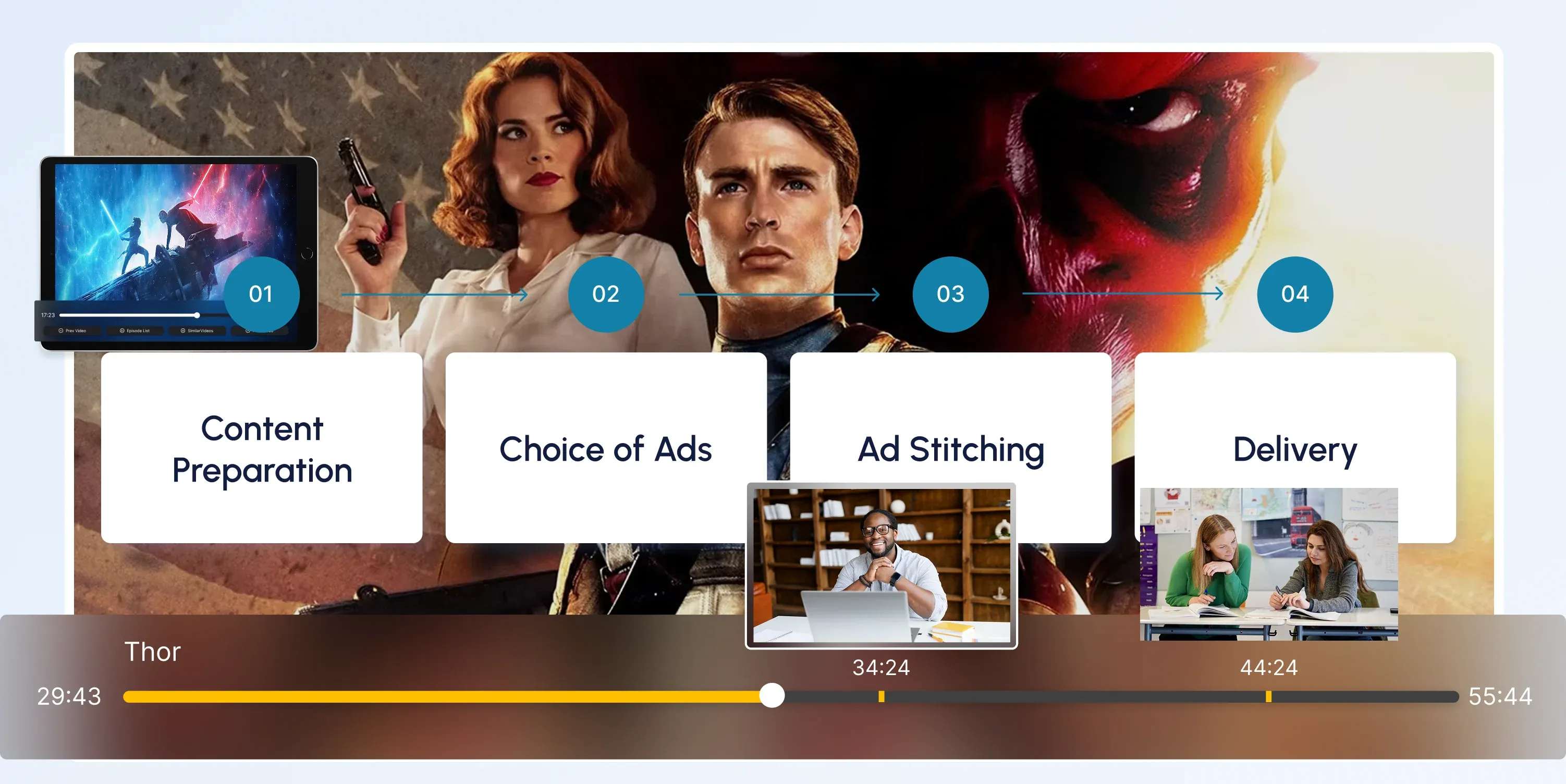
CSAI (Client-Side Ad Insertion)
Learn how CSAI delivers ads through the video player, enabling targeting, tracking, and monetization.
